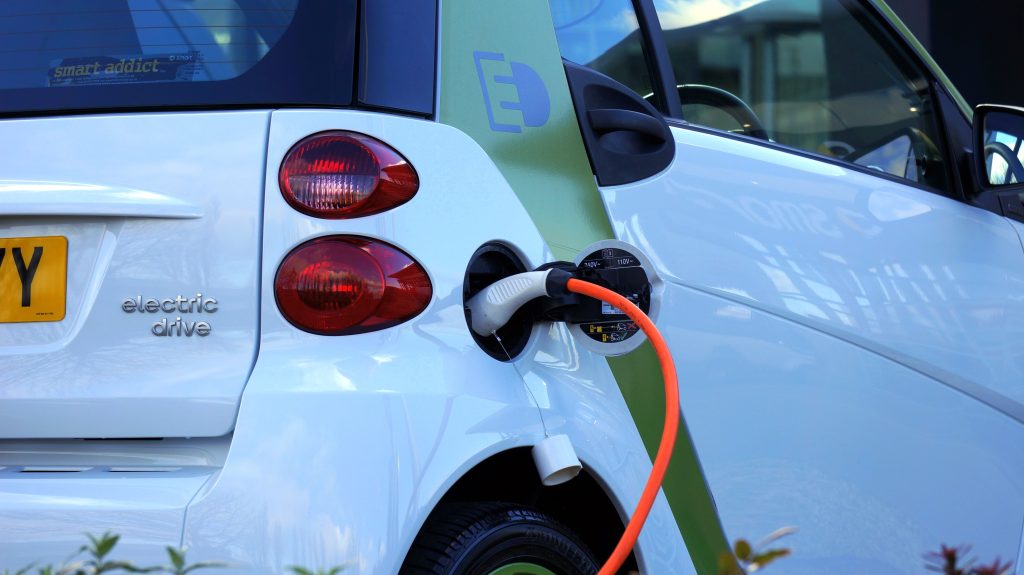Every year, vehicles on the highway release around 1.4 billion metric tons of greenhouse gases or GHGs into the atmosphere. The GHGs released are mainly carbon dioxide (CO2). This significantly contributes to global climate change. In fact, for each gallon of gasoline you burn, 20 pounds of GHG are created. To put that into perspective, a typical vehicle emits five to nine metric tons annually.
To deal with climate change, people must focus on finding renewable energy solutions for their transportation needs. Hybrid and electric vehicles are the most promising technologies for reducing vehicle emissions.
What are Hybrid Cars?
A hybrid car or hybrid electric vehicle (HEV) is a type of vehicle that uses at least two different power sources to move. The most common type of hybrid car uses an internal combustion engine (ICE) to run the vehicle’s main systems and an electric motor to provide extra power when needed.
Hybrid cars have become increasingly popular in recent years as gasoline prices have risen and people have become more concerned about the environmental impact of their vehicles. Hybrid cars can get better fuel economy than traditional gasoline-powered cars and emit less pollution.
Types of Hybrid Cars
The general population is already aware of hybrid cars. But they need to find out the different types available for purchase. There are four main types of hybrid vehicles in the market.
- Mild Hybrids – A mild hybrid system usually can’t move the vehicle using electricity alone. The system is utilized to increase the power output of the gasoline engine- often when starting from a stopped position- and to help with energy management for air conditioning and other systems that require lots of power. Mild hybrids do not need to be plugged in. They normally have 48-volt electric systems. Instead, charging the hybrid batteries comes from power from the gasoline engine. It also gets recovered energy when the vehicle brakes, also known as regenerative braking.
- Full Hybrids – The full hybrid contains a gasoline engine and an electric component like the mild hybrid, but the electrical part can do more of the job. Most full hybrids can go quite a ways by only using electric power. This usually occurs at low city speeds, which is one explanation for why you may see that a full hybrid’s city miles-per-gallon (MPG) rating is bigger than its highway MPG score.
- Plug-In Hybrids – A plug-in hybrid electric vehicle (PHEV) is a type of hybrid electric vehicle that has rechargeable batteries. Owners can charge these batteries by connecting the PHEV to an external power source via a plug. PHEVs share characteristics with conventional hybrid electric vehicles with both an electric motor and an internal combustion engine and all-electric vehicles with a plug that allows them to connect to the electrical grid. PHEVs have a greater all-electric range than regular gasoline-electric hybrids, and they also do away with the range anxiety people often feel when driving an all-electric vehicle.
- Electric Vehicles with Range Extender Hybrids – All-electric vehicles are not considered hybrids. But some have a small gasoline engine to act as backup. When an electric vehicle’s battery dies, it needs to be charged before the car will work again. These range extender hybrids use their gasoline engine to charge the battery or power the electric motor, so you’re not stranded. Depending on the gasoline engine’s size, this can range from a few dozen miles to hundreds.
Difference Between Hybrid Cars and Electric Cars
Electric cars run on batteries instead of gasoline and have an electric motor rather than a traditional combustion engine. On the other hand, hybrid vehicles are a mix of gas and electric cars; they have both types of power sources, such as batteries, electric motors, and internal combustion engines. They also fuel up using both electricity and gasoline. Aside from their power source, these two vehicles have other differences.
Emissions
Electric vehicles have no tailpipe emissions. But the power plant providing electricity may produce more pollution than the car itself. Total emissions of electric vehicles are significantly lower than vehicles using fossil fuels. But if the power plant uses renewable energy to produce electricity, the total emissions are even lower.
On the other hand, hybrid vehicles produce tailpipe emissions whenever they use gasoline as a fuel source. The emissions depend on the mileage driven by gasoline and the emission factor of the vehicle. The emission factor measures how much pollution a car emits for each gallon of gasoline it uses. Total emissions from hybrid vehicles are lower than from conventional cars with the same mileage driven and emission factor.
So, using either an electric or hybrid vehicle can help reduce the effects of climate change. This can add to the many benefits of sustainable home building and serve as one of the ways homeowners can save the planet.
Driving Range
The driving range of electric vehicles is lower than gasoline-powered vehicles. Despite this, it is enough to allow vehicle owners to accomplish everything they need for the day. The average electric car has a median range of 234 miles compared to the 403 miles of a gas-powered car.
In contrast, a plug-in hybrid has a driving range comparable to cars with a gas engine. This is made possible by the gas engine working with the electric motor.
What are the Advantages of a Hybrid Car?
Hybrid cars have several advantages over traditional gasoline or diesel cars.
Environment Friendly
Being environment-friendly is the biggest advantage of owning a hybrid car. These cars run on a combination of electric motors and gasoline engines. This cuts fuel consumption and conserves energy. As a result, they produce lower emissions than traditional cars.
Better Fuel Economy
Another advantage of hybrid cars is that they have better fuel economy. Since they rely partially on electricity to run, they are more efficient in fuel usage. This means that you will save money on gas in the long run. It also means you have lower running costs if you own this environmentally-friendly car.
Low Maintenance Cost
Another perk of owning a hybrid car is lower maintenance costs. They have fewer moving parts than traditional gasoline or diesel cars. As a result, they are less likely to break down and require less maintenance and repairs.
Have Higher Resale Value
The higher gas prices increased the popularity of hybrid vehicles. This meant that more people wanted to purchase these types of cars. In turn, this caused the resale value of hybrids to increase. So, if you own a hybrid car and decide to sell it or trade it in, you could receive a higher return on your investment than if you had a standard car.
Lesser Range Anxiety Stress
Range anxiety usually affects electric vehicle owners since they worry about finding a charging station before their battery dies. However, this is not a common concern for owners of hybrid electric cars. The car automatically switches to its internal combustion engine when a hybrid vehicle’s battery runs low on charge. Additionally, the availability of gas stations makes it comforting for hybrid vehicle owners. As a result, drivers of hybrid cars experience less range anxiety stress.
What are the Disadvantages of a Hybrid Car?
While hybrid vehicles have several advantages, there are also some disadvantages of hybrid cars.
Higher Upfront Cost
Buying a hybrid car can mean a higher upfront cost. They usually cost around $3,000 more than conventional gas-engine cars. But the fuel efficiency of hybrid vehicles can offset the initial purchase price. But there are affordable hybrids that cost around $22,000. The price can go up to about $30,000 for the Toyota Prius and Honda Insight.
High Voltage System Repair Costs
While hybrid vehicles do not require regular maintenance, they can be expensive to repair – especially if the issue is with the high-voltage system. You can spend thousands of dollars to replace a damaged high-voltage battery, depending on its type and the specific model and make of the vehicle.
You should understand that hybrid vehicles have a lot of complex components that require a specialist to repair if they get damaged. Not all mechanics are familiar with hybrid technology and may be unable to fix the issue properly. Make sure you take your vehicle to a qualified mechanic with experience working on hybrids.
Less Power Than Standard Cars
Hybrid car manufacturers focus on better fuel efficiency and lower CO2 emissions. As a result, many performance enhancements impacting maximum horsepower are sacrificed. For example, hybrid vehicles typically accelerate slower than their conventional counterparts because space and size are often adjusted to accommodate two propulsion methods. This can be frustrating for drivers who are used to the power and speed of a standard car.
Battery Disposal and Recycling
Batteries of all types can be found in everyday household items. Most people don’t think twice about where these batteries go when they are finished being used. However, knowing how to dispose of or recycle batteries properly is crucial to ensure they don’t end up in landfills where they can cause environmental damage.
This issue also affects hybrid batteries. The main obstacle to recycling vehicles and mobile devices is the expense of extracting lithium from batteries. Even though lithium is 100% recyclable, the effort isn’t economically viable–except where required by federal law.
Hybrid cars offer a variety of advantages and disadvantages when compared to standard gasoline-powered cars. Consumers need to weigh the pros and cons of hybrid ownership before deciding whether or not to purchase one.






